FRST Lesson 2- Xylem and Phloem
1/32
There's no tags or description
Looks like no tags are added yet.
Name | Mastery | Learn | Test | Matching | Spaced |
|---|
No study sessions yet.
33 Terms
Xylem
Transports water and nutrients from roots to stems and leaves
Only goes one-way there are no end walls between cells, and thick walls are stiffened with lignin.
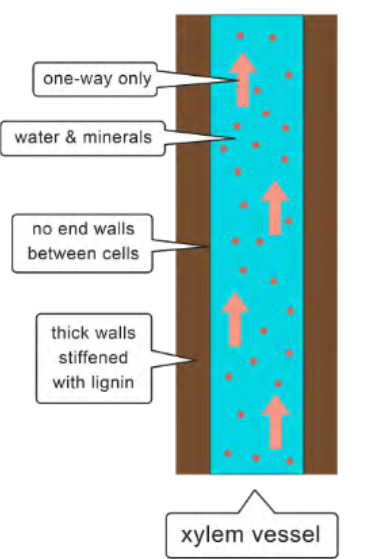
Carbon sequestration definition
When Carbon from CO2 is trapped into the wood
Phloem
Conducts sugars and other metabolic products throughout the plant and downward from the leaves
Flow of fluids can go both ways
Cells have end walls with perforations (small holes)
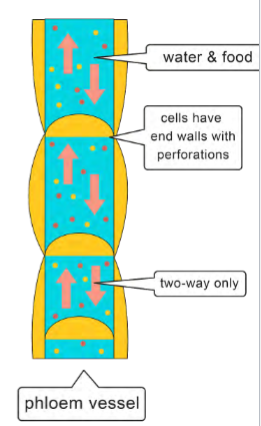
How does the lateral movement of water and nutrients occur
Through xylem
How does sugars and other metabolic products move downward from the leaves
Phloem
Vascular cambium
New wood (xylem) is made here, this part of wood originates from being is a thin layer of cells that retains the ‘magical’ property of being table to repeatedly divide.
What happens after the vascular cambium expands
Cell walls thicken and lignify and then die
What does divisions in the Vascular Cambium create?
Divisions to form new initials (Fusiform initials and ray initials)
Divisions to produce new xylem (wood) and phloem cells
Fusiform initials
Cells in the vascular cambium that divide to form secondary phloem and xylem.
Elongated cells that are arranged as bricks
Produce all vertical cells
Ray Initials
Rectangular, and shorter
Produces all horizontal cells
Periclinal Division of Cambial Fusiform initials
This division in the vascular cambium is oblique or pseudotransverse to the length of the initial
T/F Fusiform Initials in the vascular camibium are the only ones that divide
True
T/F Anticlinal dvivision of fusiform initials creates new wood and ‘bark’?
False, periclinal division creates new bark and wood tissues
List the events leading to the formation of secondary xylem(except parenchyma) in the vascular cambium?
(I Eat The Last Donut)
A) Initiation
B) Enlargement
C) Thickening of cell wall
D) Lignification
E) Death
Order of taxa in biology
Domain King Phylum Class Order Family Genus Species
Dear King Phillip Came Over For Good Soup
Soft hardwoods
Balsa Paulownia; Poplar and Wilow
Barmy Philip Prefers Wood
Changes in Dimensions of Cells During Enlargement Phase: Diameter
Particularly evident in the radial direction in earlywood tracheids in conifers and radially and tangentially in vessels hardwoods
Changes in Dimensions of Cells During Enlargement Phase: Length
Particularly evident in softwood tracheids (10-15%) and hardwood fibres (20-46%)

Wood cross section (fill in the blank)
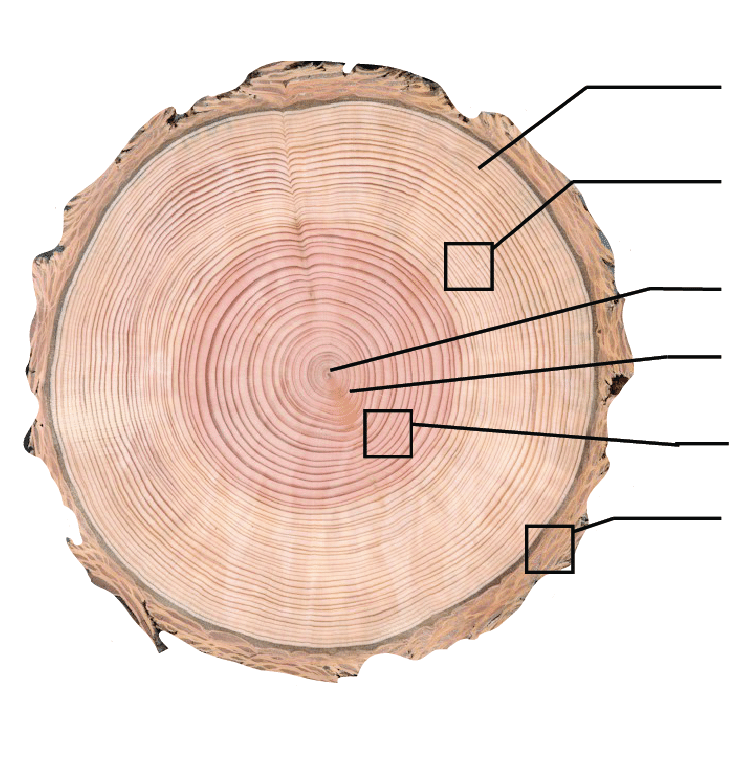
Clarinet wood conservation
Making existing clarinets last longer
Developing apparatus to simulate long term playing of clarinets
Develop treatments to stop cracking of barrels
Look for alternative woods
Currently testing two different woods
Currently making a composite material consisting of sawdust and resin
Where is the Grenadilla tree found and what is it used for?
It is found in Senegal, Eritrea, Tanzania, and South Africa.
The world most expensive wood and is very rare, great efforts are being made to conserve it.
One of the two woods used to make Clarinets.
Where is the Cocobolo tree found and what is it used for?
Found in the Pacific regions of Central America, ranging from Panama to south western Mexico.
Is increasingly rare and seldom found outside national parks.
Different types of cells in wood
Ray cells and longitudinal/tracheid cells
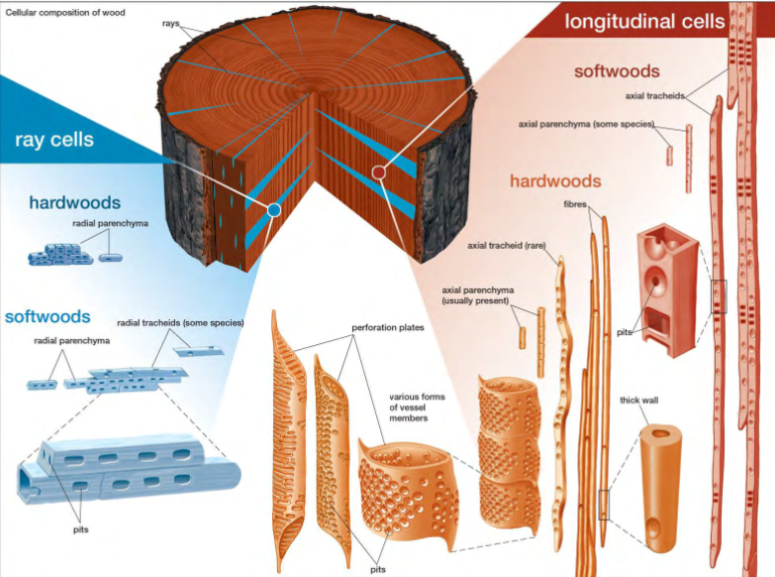
Vessel elements
(Conduct water) - joined end to end
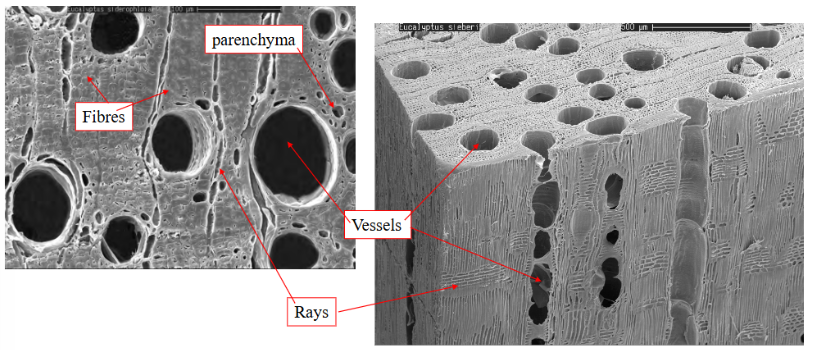
Fibres
Elongated, thick-walled cells (give strength)
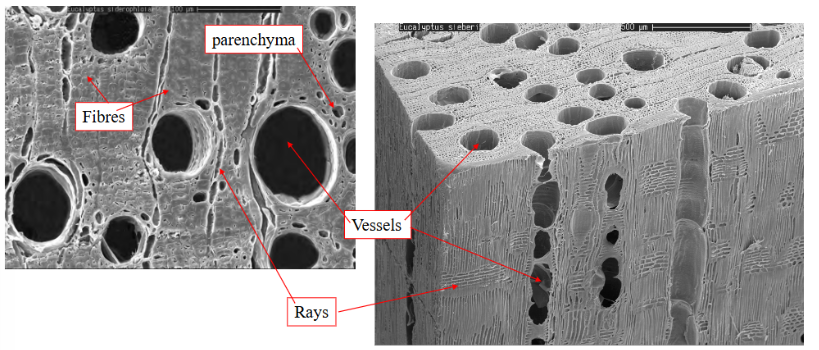
Axial parenchyma (or jus parenchyma)
Soft tissue - (storage)
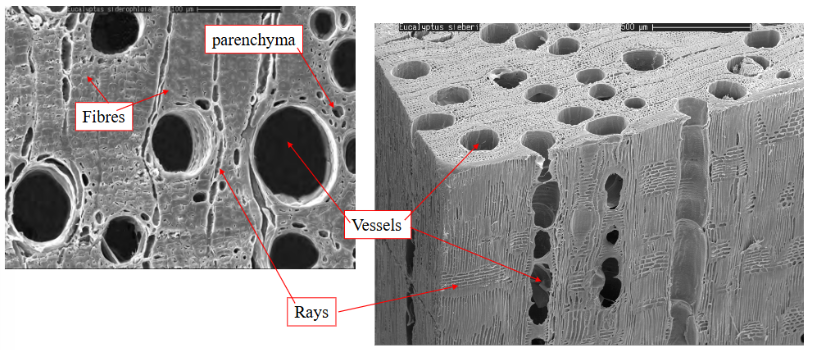
Rays
Storage
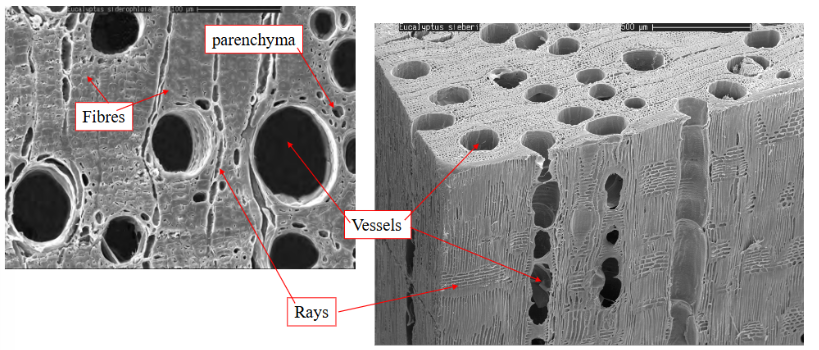
Who was the famous Swedish scientist who developed the binomial system of naming species?
Carl Linnaeus
How does the vascular cambium keep up with growth in size of the stem (Bailey)
Though the increase of the cambial initials during the earlier stages of the enlargement of certain plants, is by no means a negligible factor; the rapid increase in girth of the lateral meristem must in general be due largely to a progressive increase in the number, rather in the size of its constituent cells.
How are ray initials created?
Transverse divisions within fusiform initials (blue arrows)
Intrusive growth of fusiform initial into two (red arrows)
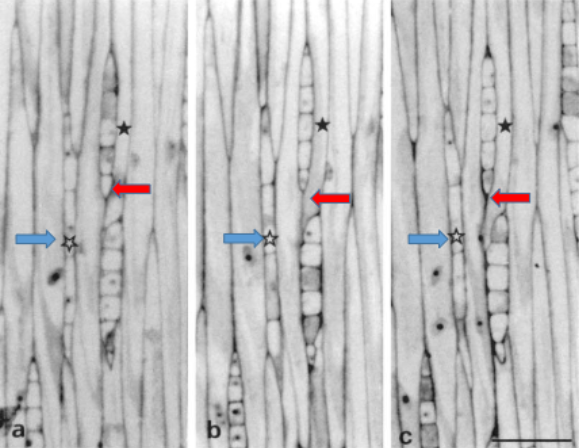
Periclinal cell division
Cell divisions that occur parallel to the surface of a plant, adding new cells to the plant’s girth (circumference of its stem, or the measurement around the outside of its trunk.)
Lignification
Converting wood or woody tissue, strengthen plant cell walls by depositing lignin polymers in them.
Complex process that occurs only in higher plants
What does the first periclinal cell division produce?
One secondary cell (xylem or phloem and one cambial cell)